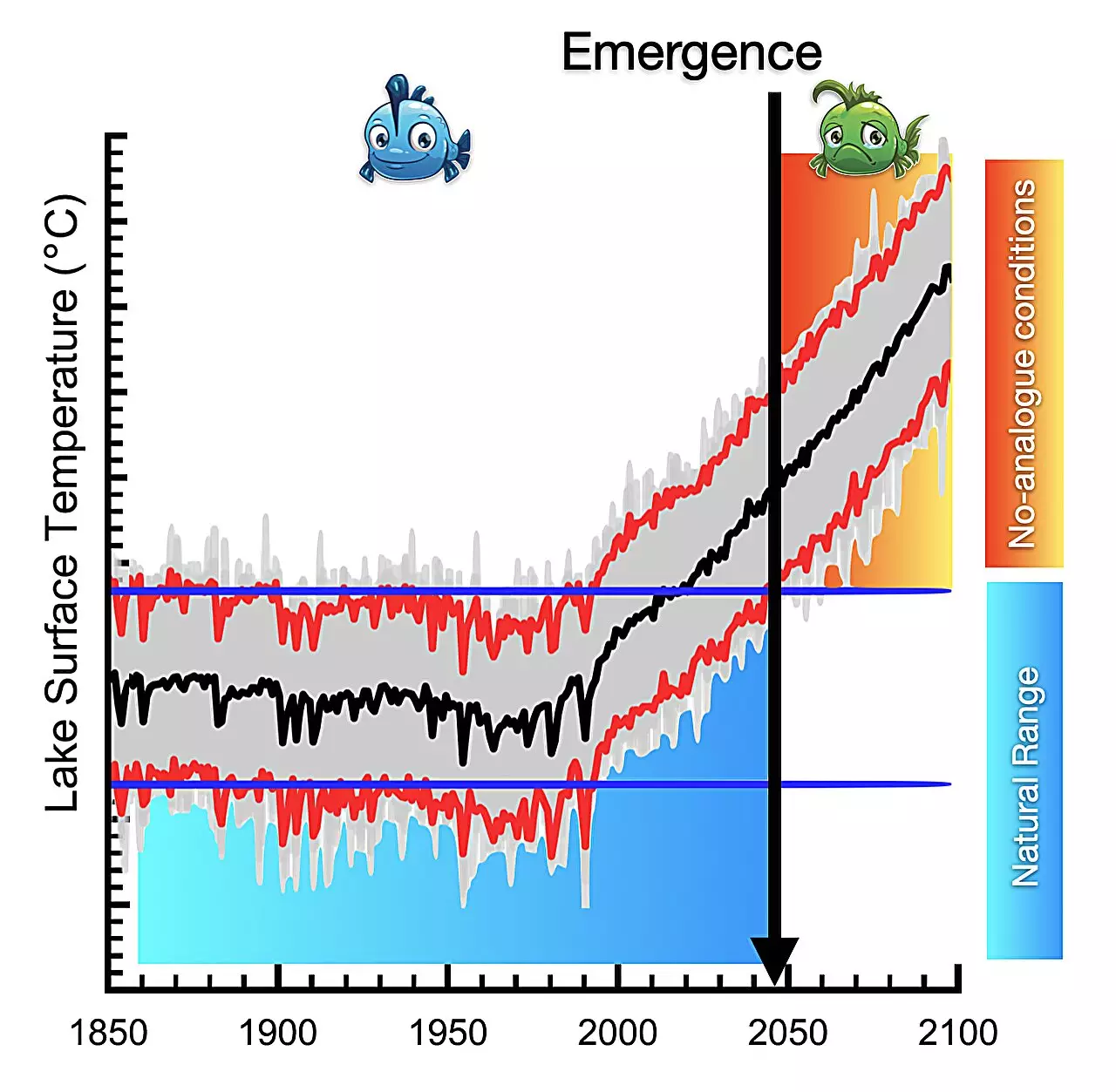Lakes are not merely aesthetic landscapes; they are critical reservoirs of biodiversity, essential for the health of our planet. However, recent research has revealed alarming trends in lake temperatures that signal a simultaneous crisis for aquatic ecosystems and the climate. The study published in *Nature Geoscience* by an international consortium of limnologists and climate scientists paints a bleak picture: if current rates of anthropogenic warming persist, by the end of this century, lakes across the globe will endure extreme thermal shifts that far exceed historical variations. This scenario underscores the urgent need for concerted efforts in climate mitigation and environmental stewardship.
The Groundbreaking Study
Utilizing cutting-edge climate modeling through the Community Earth System Model (version 2), researchers analyzed lake temperature data spanning from 1850 to 2100 CE. The innovative approach of employing an ensemble of 100 different simulations allowed scientists to unravel the complex interplay between natural variability and human-induced climate change. The model meticulously considers both the thermodynamic principles governing lake ecosystems and their atmospheric interactions. This depth of analysis reveals how uniquely susceptible lakes are to climate change—in stark contrast to more mobile terrestrial and marine species that can change habitats more easily.
This study is the first of its kind, providing insights into when specific lakes will reach critical temperature thresholds, heralding what the researchers term “no-analog conditions.” This concept refers to climate states that lack historical precedent, raising alarming implications for the flora and fauna that depend on balanced thermal environments for survival. Dr. Lei Huang, the lead author of this pivotal research, strongly suggests that we are at a critical juncture; by the end of the century, lakes will consistently experience temperatures beyond their natural bounds.
Tropical Lakes as Early Warning Systems
The study highlights a particularly urgent concern: tropical lakes, teeming with diverse ecosystems, are projected to feel the heat first. According to the research, a global temperature increase of just 2.4°C above pre-industrial levels could trigger these lakes into no-analog climates. Unlike species found in terrestrial or deeper marine environments, many freshwater organisms are less mobile, which significantly heightens their vulnerability. As these ecosystems begin to thermally destabilize, the ramifications may be dire.
One of the most striking findings pertains to the dual effects of warming on both surface and subsurface layers in lakes. While surface temperatures increase, some organisms might attempt to migrate vertically to cooler deep waters. However, the subsurface layers may not remain insulated—it’s here that thermal stratification comes into play. During frequent mixing events, thermal energy can rapidly penetrate these layers, leading to synchronous warming that can alter the fundamental composition of these ecosystems. Dr. Iestyn Woolway emphasizes the importance of understanding these subsurface changes, as they affect different aquatic species differently based on their thermal preferences and mobility capabilities.
The Ripple Effects on Ecosystems
The implications of these no-analog conditions for lake ecosystems are unsettling. With a limited ability to adapt rapidly to such changes, the organisms that inhabit lakes face existential challenges. Professor Axel Timmermann, a co-author of the study, notes that the detrimental effects on aquatic ecosystems could result in drastic disruptions. The intricate balance of these ecosystems could unravel, leading to potential biodiversity loss and the collapse of local food webs.
Furthermore, as lake temperatures rise, there are increasing concerns about the release of nutrients and pollutants from sediments, potentially triggering harmful algal blooms and other forms of ecological distress. Such phenomena not only threaten the biodiversity of the lakes but could also impact surrounding human populations that rely on these ecosystems for their drinking water and livelihoods.
While studies like these shatter the illusion of stability within freshwater systems, they also provide a clarion call for proactive measures. Understanding and anticipating the timing of these unsettling changes is essential for developing effective strategies to mitigate impacts, protect fragile ecosystems, and adapt resource management practices accordingly. The alarming trends identified by this research emphasize that time is not on our side; immediate actions are necessary to forge a sustainable path forward for Earth’s vital lakes.

